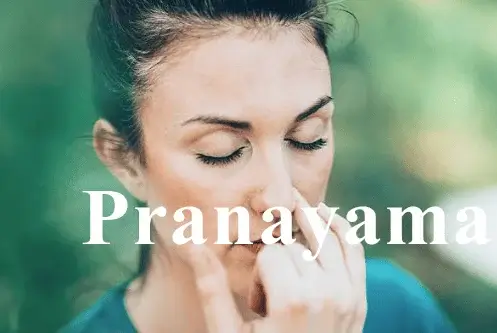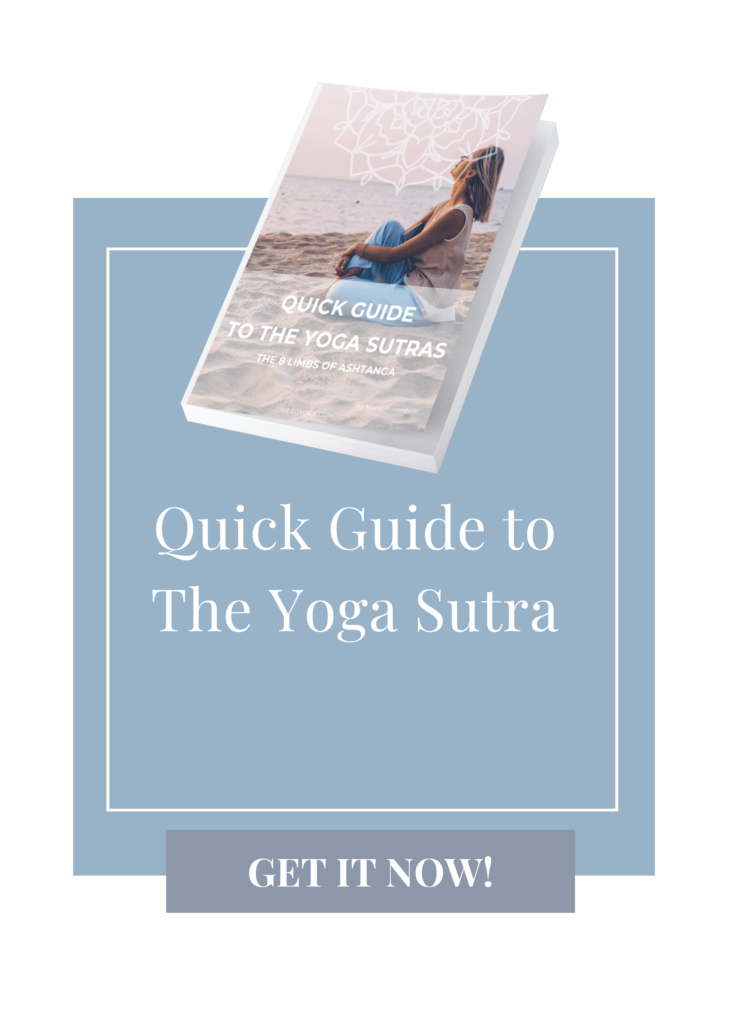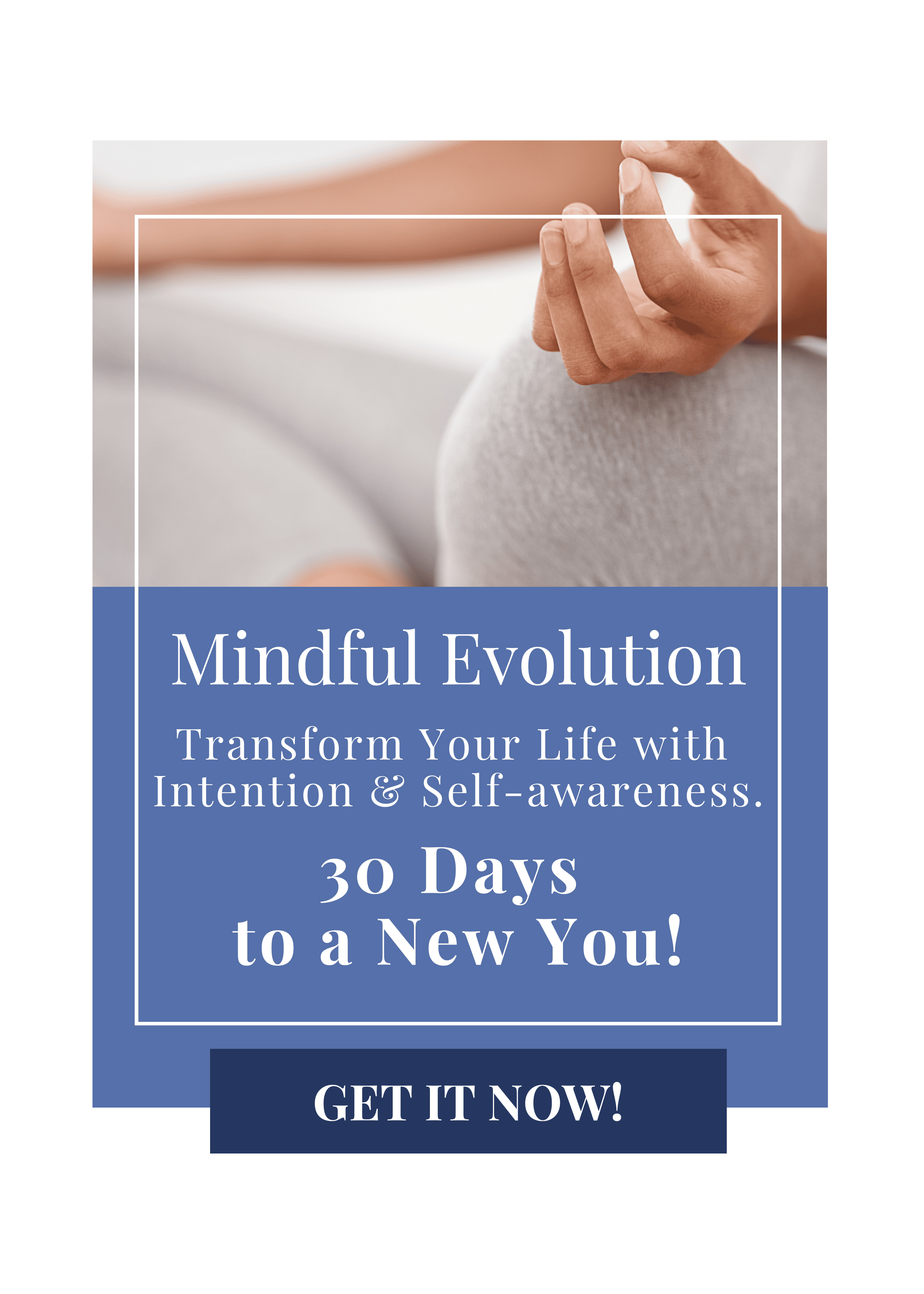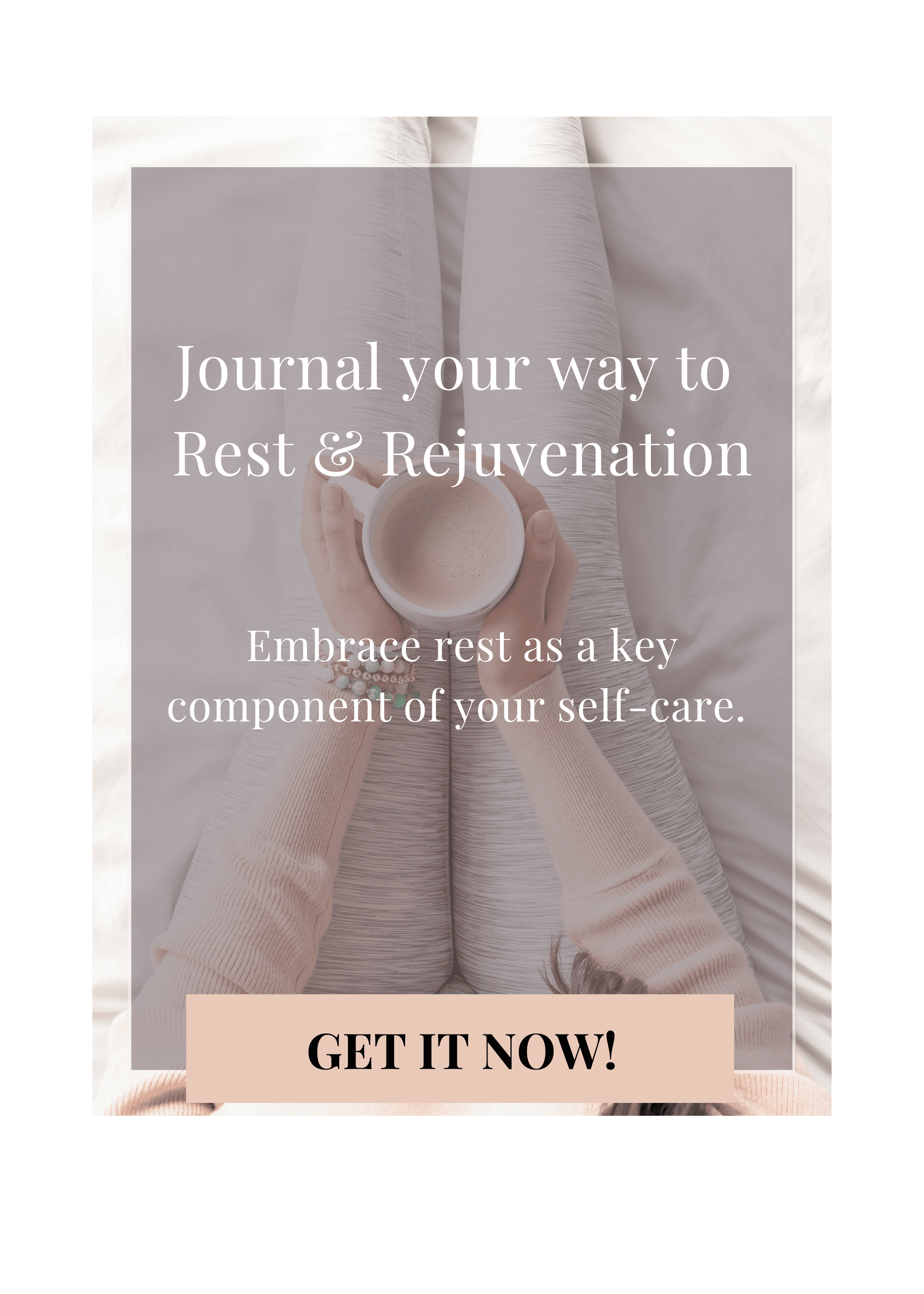This article includes a short introduction to the principles of Pranayma + journal prompts + practical and easy ways to incorporate the concept into your life.
NOTE If you just landed on this article be sure to read the first article in this series first:
“What can an ancient text called the Yoga Sutra do for you?”
PRANAYAMA – breathing exercises
(Yoga Sutra II. 49)
Pranayama is the fourth limb of the 8-limbed path to yoga mentioned in the Yoga Sutra. Prana means “to breathe” and is thought of as your life energy. Yama can be translated as “restraint”, “control” or “extension”. Pranayama focuses on using breath to remove any blocks that block the free flow of energy in your body.
Pranayama means extension of your life, and originally intense yogic breathing exercises were taught, each one at their proper time, so that you could sit comfortably in meditation for long periods of time.
Pranayama is the act of controlling and directing energy, namely by controlling the rate and flow of the breath. Pranayama involves many different breathing techniques that aim for different results. There are over 100 different breathing techniques that create different effects in your body, such as energizing, cooling, calming, and affecting the cardiovascular system and brain waves.
The breath is one of the key elements to remove distractions from the mind and calm it, by directly affecting your nervous system. You can use your breath to calm and balance yourself, reduce lethargy, strengthen the body and mind, cool or warm the body, and within the practice of yoga, it is always with the aim of promoting and maintaining your overall health.
It is said that the quality of your breath determines the quality of your life, and I’m a strong believer in this, having witnessed the effect of using specific breathing exercises countless times with my clients. I incorporate breathing exercises with all clients, and as a breath coach, it is always the one of first tools I introduce.
When you learn to manage and control your breath, you can control your mind. If the mind feels anxious, your breathing tends to become shallow and fast, this in turn sends signals to your nervous system that something is wrong, creating an endless loop of anxiety. By using a guided and controlled breath, you can change the signals to the nervous system, and reassure it that everything is ok. This creates a place of peace and tranquility for the mind, your body relaxes and you can open up space for concentration and meditation.
Your breath affects the heart, your organs, brain, muscles and joints. So, it is not for nothing that breath plays an important role in yoga. We often begin a yoga class by focusing on the breath, and through breathing, the body is relaxed. The day and its activities begin to seem more distant, and the feeling of having to hurry becomes a distant memory.
Pranayama and asana practice go hand in hand, and together they are considered the highest form of purification of body and mind.
To incorporate Pranayama into your daily life effectively, it’s essential to start gradually, be consistent, and listen to your body. It can also be beneficial to learn the techniques from a qualified instructor to ensure you’re practicing correctly and to understand any contraindications.

You might also like “The four best books on breathwork”
How to practice Pranayama.
The practice of Pranayama.
- Please remember that you should never be short of breath, or feel dizzy or anxious when practicing.
- As you practice yoga focus on your breath as you move in and out of the poses and hold them.
- Use the signals from your breath, to tell you when you can move on or if you are at your limit and need to hold back a bit in a pose.
- Return to deep calm breaths again and again.
- If you experience forced and uneven breathing, try to hold the pose a little longer, and breathe deeply.
- Consider receiving life-force energy with each inhale and releasing what no longer serves you with each exhale.
- Take a few deep belly breaths before meditating to calm and focus the mind.
Applying the principles of Pranayama to your life.
- Every now and aging during the day, try to be aware of your breathing release any tension you might hold, and try to relax further.
- Begin your day with a few minutes of Pranayama, taking slow deep breaths.
- Use Nadi Shodhana (Alternate Nostril Breathing) to balance the left and right hemispheres of the brain, calming the mind and enhancing concentration whenever you need it.
- In the evening, incorporate calming Pranayama techniques such as Sama Vritti (Equal Breathing).
- Use your breath when practicing yoga to deepen your awareness and enhance the connection between body and mind.
Important self-investigation.
When you begin to practice Pranayama, remember that you should never be short of breath, or feel dizzy or anxious when practicing. There are a lot of practices to choose from, and I always start my clients by practicing balancing or relaxing exercises first.
The more energizing practices require that you have a better understanding and knowledge of the breath for these practices to be safe. Also, the more energizing practices can actually worsen some existing health issues, which is why, if you are new to the practice, the balancing and down-regulating practices are where you should start.
Pranayama, can help make you more aware of how you use your breath, and teach you to use the right type of breath for the activity you’re performing.
Start slowly and simply start to pay attention to your breathing in different situations in everyday life. If you find yourself feeling nervous or anxious, try to bring your attention to your breath and begin to lengthen your exhalation. Make your exhalation slightly longer than your inhale and continue for a few minutes. Then observe the difference in mind and body.
When you practice yoga, you can keep your attention on your breath. Try to keep your breathing steady and both inhalations and exhalations calm and long. Let the breath support you in the more challenging poses by deepening it and letting it guide you into and out of poses.
Together with your yoga teacher, you can explore the different breathing techniques and their effects on you. In its essence, Pranayama is easy to apply in any situation and at any time. You can practice while sitting on the bus, or at your desk at work. Just a few minutes at a time, just a few controlled breaths at a time, can be hugely beneficial to you.
Contemplation and Journal prompts on the principles of Pranayama.
- What does the concept of “prana” (life force energy) mean to you? How do you perceive its flow within your body?
- How does practicing an awareness of your breath enhance your mindfulness and ability to be present in the moment?
- How does taking a few deep breaths affect your mental state?
- What physical sensations can you observe during and after taking several deep belly breaths?
- Are there any areas of the body that feel particularly activated or relaxed?
- How can you integrate more awareness of the breath in other areas of your life?
- Are there moments throughout your day where a heightened focus on your breath could be beneficial?
- Which Pranayama technique did you practice today? How did it make you feel?
- Reflect on your progression since you began practicing pranayama. What is easier now?
- How does the cultivation and awareness of Prana through Pranayama affect your consciousness or spiritual awareness?
Ready to take the next step – Pratyahara!
You might also like “Box breathing 4×4 breathing exercise“






